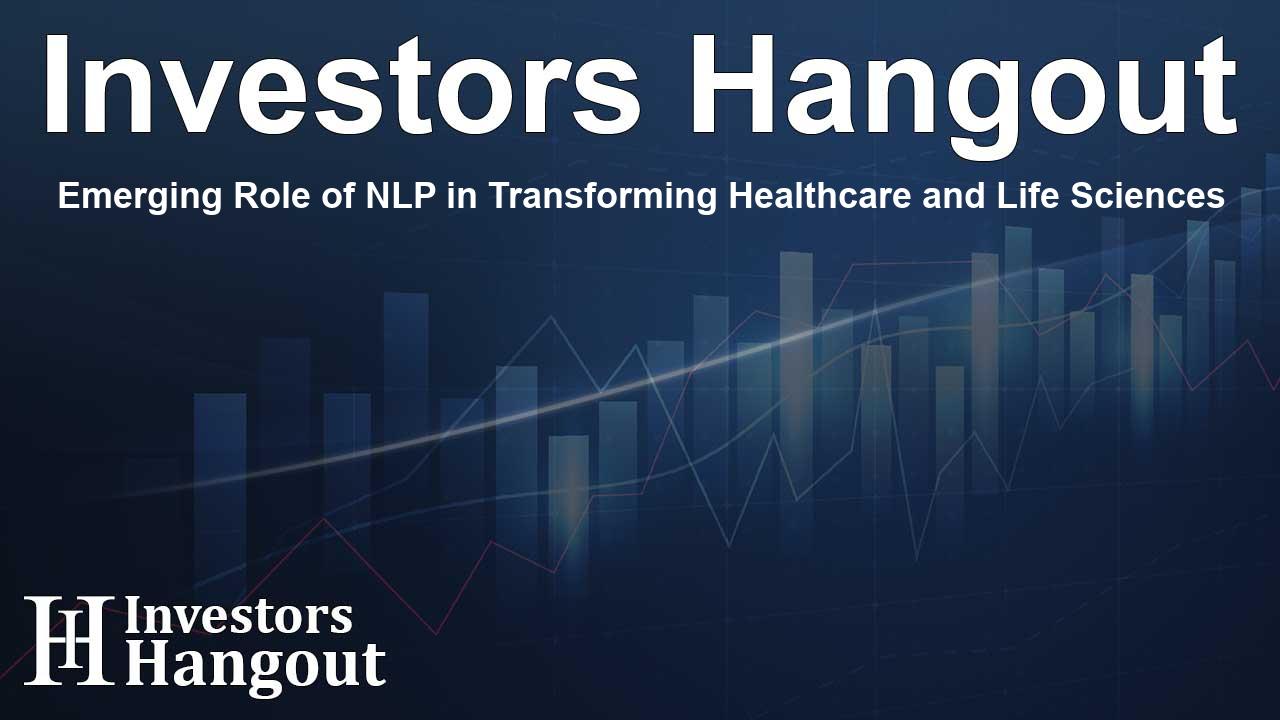Emerging Role of NLP in Transforming Healthcare and Life Sciences

Transformative Impact of Natural Language Processing in Healthcare
Natural Language Processing (NLP) is redefining the landscape of healthcare and life sciences. With its ability to analyze vast amounts of unstructured data, NLP is unlocking insights that were previously difficult to attain. This innovative technology is not just a trend; it is critical for enhancing patient care and optimizing operations.
Market Growth and Potential
The global market for NLP in healthcare is projected to grow significantly, with estimates suggesting it could reach USD 9.57 billion within the next several years. This anticipated growth reflects a compound annual growth rate (CAGR) of approximately 19.82%. Such statistics underscore the increasing reliance on AI-driven solutions in healthcare settings.
The Rise of NLP Technologies
Advancements in artificial intelligence and machine learning have led to unprecedented developments in NLP technologies. These advancements enable more accurate data extraction and analysis from unstructured information, which is crucial for improving diagnostics and patient outcomes. Organizations that invest in these technologies position themselves favorably in a market driven by innovation.
Contributions to Patient Care
NLP tools significantly enhance the quality of patient care by streamlining clinical documentation processes and facilitating better communication between healthcare providers and patients. With improved data management capabilities, healthcare professionals can provide more personalized treatments, ensuring patients receive the most effective care possible.
Challenges Facing NLP Implementation
Despite its promising capabilities, the adoption of NLP in healthcare is not without challenges. High implementation costs often serve as a barrier, particularly for smaller organizations. Developing the necessary infrastructure and training staff to utilize these advanced tools requires significant investment.
Key Insights from Recent Studies
Research has outlined several crucial insights regarding the adoption of NLP in healthcare, emphasizing its potential to transform clinical workflows. Key findings include:
- Market Overview: Current trends and growth drivers influencing the adoption of NLP in healthcare.
- Technological Developments: Advances in machine learning and AI are central to enhancing NLP functionalities.
- Applications in Healthcare: NLP is integral to clinical data management, diagnosis, and drug discovery processes.
- Competitive Landscape: Key players shaping the industry by introducing innovative solutions.
- Strategic Insights: Recommendations for organizations looking to harness NLP to enhance operations.
Who Can Benefit from NLP Solutions?
Healthcare providers, life sciences companies, technology innovators, and investors can all leverage insights from NLP technologies. For instance, healthcare organizations can improve efficiency and enhance patient outcomes by implementing advanced NLP tools, while investors can identify emerging market trends and opportunities.
Data Privacy and Compliance Concerns
As NLP solutions become more prevalent, concerns regarding data privacy and compliance with regulations like HIPAA and GDPR have intensified. Organizations must navigate these challenges effectively to maintain trust and comply with legal standards.
Regional Insights
In North America, the healthcare infrastructure coupled with substantial R&D investments fosters a thriving environment for NLP adoption. Conversely, regions such as Asia-Pacific are rapidly emerging as significant players in this market, driven by expanding healthcare IT initiatives and robust patient demographics.
Conclusion and Future Outlook
The future of NLP in healthcare points towards increased integration of AI-driven solutions. As the technology evolves, so too will its applications, paving the way for enhanced patient-centered care and improved healthcare operations globally. Stakeholders who adapt to these changes and embrace innovative technologies will undoubtedly position themselves for success in this dynamic landscape.
Frequently Asked Questions
What is Natural Language Processing (NLP)?
NLP is a technology that enables machines to understand and process human language, helping to extract insights from unstructured data.
How is NLP applied in healthcare?
NLP is used for various applications, including clinical data management, patient engagement, and drug discovery.
What are the growth prospects for NLP in healthcare?
The NLP in healthcare market is expected to see substantial growth, potentially reaching USD 9.57 billion by the end of the forecast period.
What challenges does NLP face in healthcare adoption?
Key challenges include high implementation costs, data privacy issues, and the need for specialized expertise in healthcare organizations.
Which regions are leading in NLP adoption in healthcare?
North America currently leads in NLP adoption, though regions such as Asia-Pacific are becoming increasingly significant due to growing healthcare IT demands.
About The Author
Contact Lucas Young privately here. Or send an email with ATTN: Lucas Young as the subject to contact@investorshangout.com.
About Investors Hangout
Investors Hangout is a leading online stock forum for financial discussion and learning, offering a wide range of free tools and resources. It draws in traders of all levels, who exchange market knowledge, investigate trading tactics, and keep an eye on industry developments in real time. Featuring financial articles, stock message boards, quotes, charts, company profiles, and live news updates. Through cooperative learning and a wealth of informational resources, it helps users from novices creating their first portfolios to experts honing their techniques. Join Investors Hangout today: https://investorshangout.com/
The content of this article is based on factual, publicly available information and does not represent legal, financial, or investment advice. Investors Hangout does not offer financial advice, and the author is not a licensed financial advisor. Consult a qualified advisor before making any financial or investment decisions based on this article. This article should not be considered advice to purchase, sell, or hold any securities or other investments. If any of the material provided here is inaccurate, please contact us for corrections.
